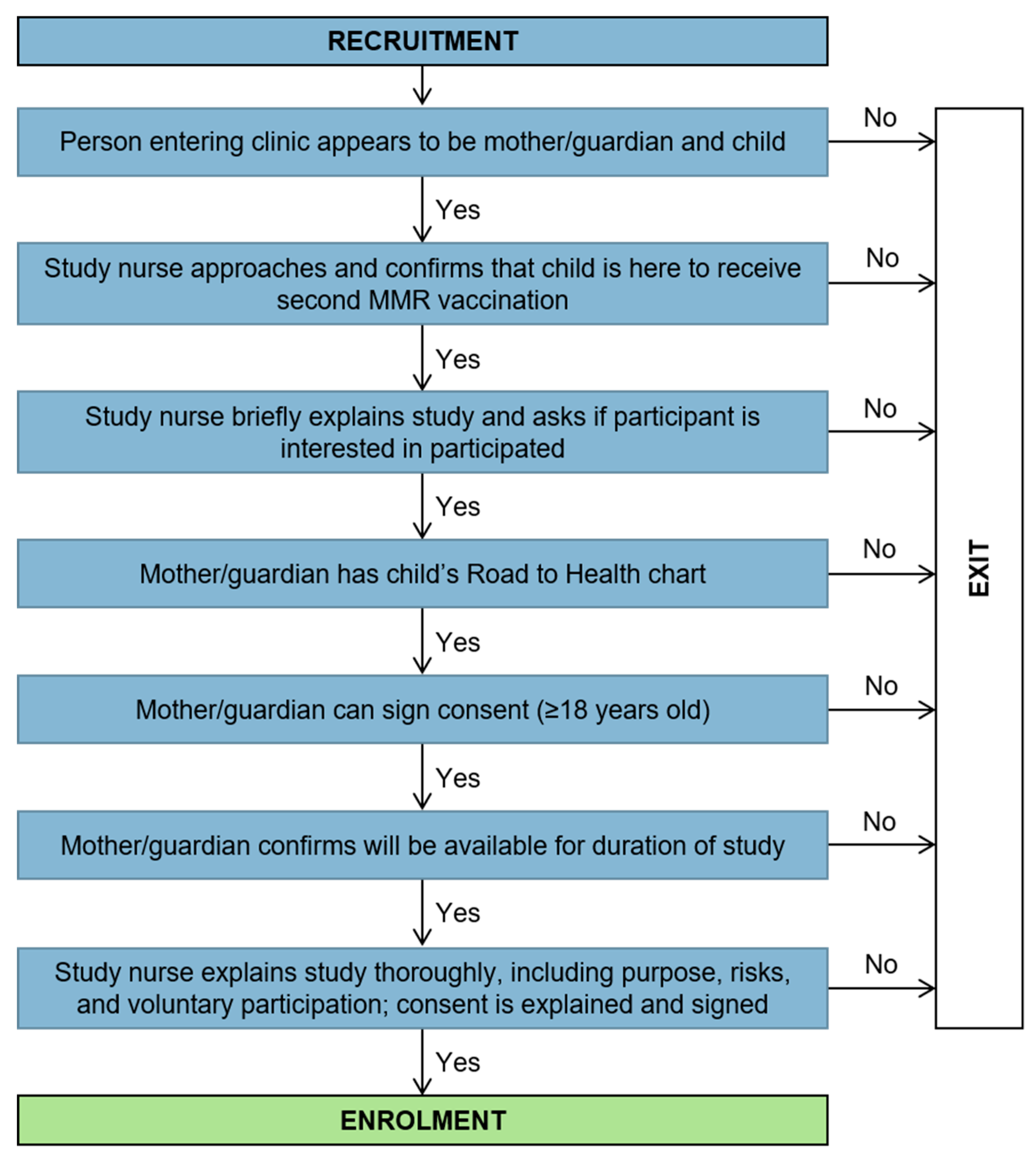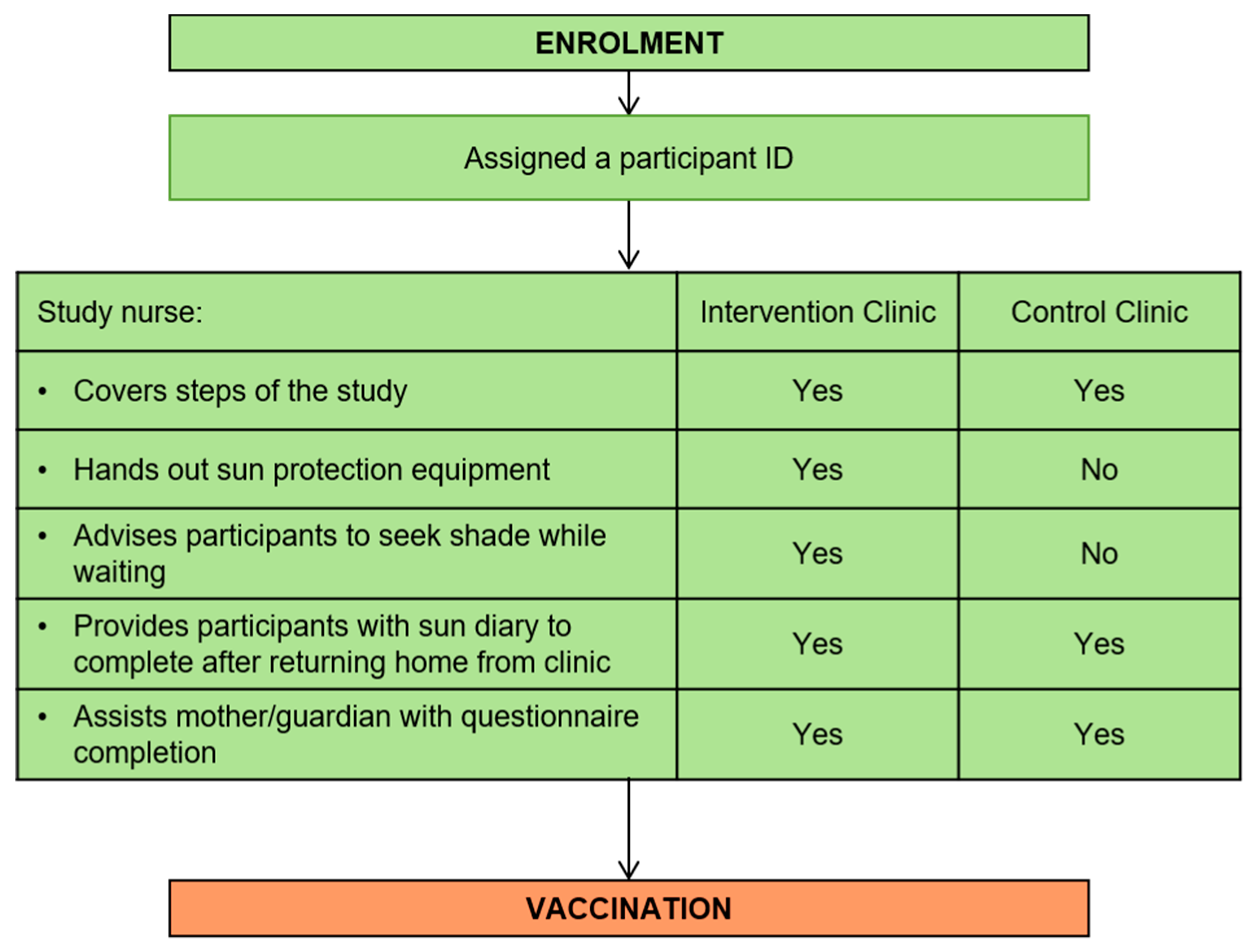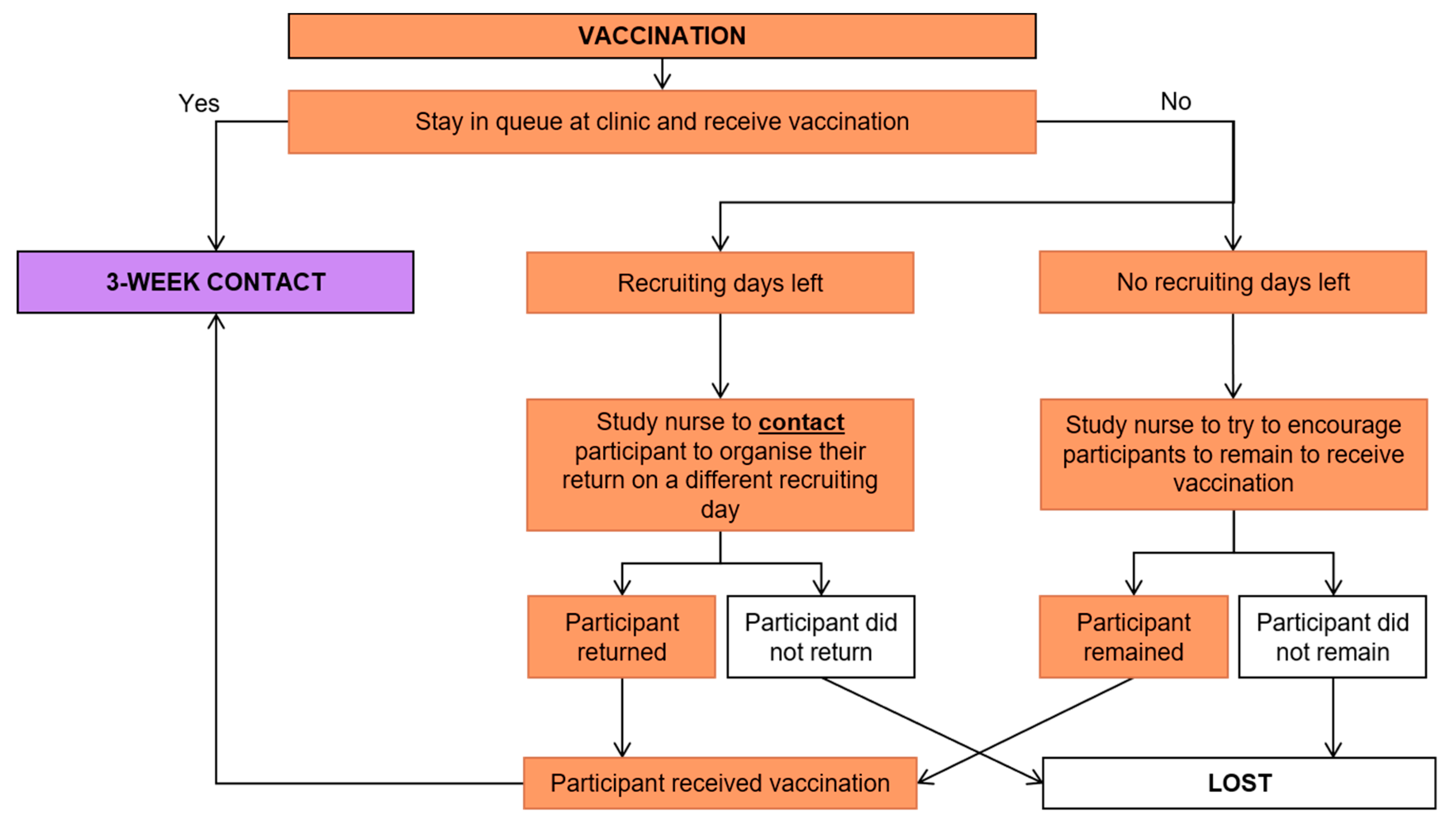Clinical Trial Data Management in Environmental Health Tailored for an African Setting
Abstract
:1. Introduction
2. Methods
2.1. Clinical Trial Methods in Brief
2.2. Ethics Approval and Consent to Participate
2.3. Data Management Tool Conceptulisation
2.4. Tool Development
2.5. Tool Evaluation
3. Results and Discussion
3.1. Study Sample
3.2. Evaluation of the Data Management Tool
3.3. Limitations
4. Conclusions
Supplementary Materials
Author Contributions
Funding
Availability of Data and Materials
Acknowledgments
Conflicts of Interest
References
- Department of Health. Guidelines for Good Practice in the Conduct of Clinical Trials with Human Participants in South Africa; Department of Health: Pretoria, South Africa, 2006.
- Joubert, G.; Ehrlich, R. Epidemiology: A Research Manual for South Africa, 2nd ed.; Oxford University Press: Cape Town, South Africa, 2007. [Google Scholar]
- Kendall, J.M. Designing a research project: Randomised controlled trials and their principles. Emerg. Med. J. 2003, 20, 164–168. [Google Scholar] [CrossRef] [PubMed] [Green Version]
- Krishnankutty, B.; Bellary, S.; Kumar, N.B.R.; Moodahadu, L.S. Data management in clinical research: An overview. Indian J. Pharmacol. 2012, 44, 168–172. [Google Scholar] [CrossRef] [PubMed]
- Finances Online. 20 Best Clinical Trial Management Software of 2019. Available online: https://financesonline.com/clinical-trial-management/#IBM (accessed on 31 October 2019).
- Allen, R.W.; Barn, P.K.; Lanphear, B.P. Randomized Controlled Trials in Environmental Health Research: Unethical or Underutilized? PLoS Med. 2015, 12, e1001775. [Google Scholar] [CrossRef] [PubMed] [Green Version]
- World Health Organization. Health Topics: Environmental Health. Available online: http://www.searo.who.int/topics/environmental_health/en/ (accessed on 31 October 2019).
- Omollo, R.; Ochieng, M.; Mutinda, B.; Omollo, T.; Owiti, R.; Okeyo, S.; Wasunna, M.; Edwards, T. Innovative Approaches to Clinical Data Management in Resource Limited Settings Using Open-Source Technologies. PLoS Negl. Trop. Dis. 2014, 8, e3134. [Google Scholar] [CrossRef] [PubMed] [Green Version]
- Wright, C.Y.; Albers, P.N.; Mathee, A.; Kunene, Z.; D’Este, C.; Swaminathan, A.; Lucas, R.M. Sun protection to improve vaccine effectiveness in children in a high ambient ultraviolet radiation environment: An intervention study. BMC Public Health 2017, 17, 37. [Google Scholar] [CrossRef] [PubMed] [Green Version]
- Hanna, M.; Minga, A.; Fao, P.; Borand, L.; Diouf, A.; Mben, J.M.; Gad, R.R.; Anglaret, X.; Bazin, B.; Chene, G. Development of a checklist of quality indicators for clinical trials in resource-limited countries: The French National Agency for Research on AIDS and Viral Hepatitis (ANRS) experience. Clin. Trials 2013, 10, 300–318. [Google Scholar] [CrossRef] [PubMed]
- South African Government. Health on Expanded Programme on Immunisation. Available online: https://www.gov.za/health-expanded-programme-immunisation-0 (accessed on 31 October 2019).
- EpiData Software. Available online: https://www.epidata.dk/ (accessed on 20 December 2019).
- Python. Available online: https://www.python.org/ (accessed on 20 December 2019).
- SQLite. Available online: https://www.sqlite.org/ (accessed on 20 December 2019).
- Lee, K.; Weiskopf, N.; Pathak, J. A framework for data quality assessment in clinical trial research datasets. AMIA Annu. Symp. Proc. 2018, 2017, 1080–1089. [Google Scholar] [PubMed]
- Wiseman, V.; Conteh, L.; Matovu, F. Using diaries to collect data in resource-poor settings: Questions on design and implementation. Health Policy Plan. 2005, 20, 394–404. [Google Scholar] [CrossRef] [PubMed] [Green Version]
- Jamison, R.N.; Raymond, S.A.; Levine, J.G.; Slawsby, E.A.; Nedeljkovic, S.S.; Katz, N.P. Electronic diaries for monitoring chronic pain: 1-year validation study. Pain 2001, 91, 277–285. [Google Scholar] [CrossRef]
- Tuti, T.; Bitok, M.; Paton, C.; Makone, B.; Malla, L.; Muinga, N.; Gathara, D.; English, M. Innovating to enhance clinical data management using non-commercial and open source solutions across a multi-center network supporting inpatient pediatric care and research in Kenya. J. Am. Med. Inform. Assoc. 2016, 23, 184–192. [Google Scholar] [CrossRef] [PubMed] [Green Version]
- REDCap (Research Electronic Data Capture). Available online: https://www.project-redcap.org/ (accessed on 20 December 2019).
- World Health Organization. Ten Threats to Global Health in 2019. Available online: https://www.who.int/emergencies/ten-threats-to-global-health-in-2019 (accessed on 31 October 2019).











| Data Element Category | n Elements Assessed | n in Dataset | Number/% of Data Elements Adhering to the Concept Criteria | ||
|---|---|---|---|---|---|
| Completeness | Value Conformance | Plausibility | |||
| Demographics | 3 | 98 | Gender (98) Age (95) Pop group (98) Total 291/294 * 100 = 99% | 291 (100%) | 291 (100%) |
| Baseline questionnaire | 21 | 98 | (Q6) 97; (Q7) 98; (Q8) 98; (Q9) 95; (Q10) 98; Q(11) 94; (Q12) 92; (Q13) 98; (Q15) 98; (Q16) 98; (Q17) 98; (Q18) 98; (Q19) 98; (Q20) 98; (Q24) 97; (Q25) 97; (Q26) 97; (Q30) 95; (Q31) 93; (Q32) 96; (Q36) 97; Total: 2030/2058 * 100 = 98% | 2052 (99%) | 2058 (100%) |
| Road to Health chart | 12 | 98 | (Q1) 98; (Q2) 96; (Q3) 97; (Q4) 97; (Q5) 97; (Q6 1min) 93; (Q6 5min) # 93; (Q7) 15; (Q8) 98; (Q9a) 98; (Q9b) 98; (Q9c) 98; Total: 1079/1176 * 100 = 92% | 100% | 1167/1176 * 100 = 99% |
| Nurse weather observations | 12 | 82 days in each clinic, total 164 + | (Date) 142; (Time) 0; (Q1) 142; (Q2) 142; (Q3) 142; (Q4) 142; (Q5 141; (Q6) 141; (Q7) 141; (Q8) 141; (Q9) 141; (Q10) 140 Total: 1555/1968 * 100 = 79% | 1958 (99%) | 1956 (100%) |
| Blood test | 1 | 88 | 87 (99%) | 87 (100%) | 87 (100%) |
| Sun Diary | 14 variables recorded 3 times a day for 7 days = 1 827 records each with 14 variables = 25 578 | 87 | (Time) 1827 (Date) 1296; 1827; 1827; 1827; 1827; 1827; 1827; 1827; 1827; 1827; 1827; 827; 1827; Total: 25,047/25,578 * 100 = 98% | 100% | N/A |
| Environmental data | 11 x 2 (for each clinic) | 125 (days) | 100% | 100% | 100% |
| Solar UVR data (total days) | 4 and then 6 instruments@ | 125 (days) 28 (4) 97 (6) | 141/(112 + 582) * 100 = 20% | N/A | N/A |
| Follow-up questionnaire | 6 | 88 | (Q1) 86; (Q2) 84; (Q3) 83; (Comments) 87 Total: 340/352 * 100= 96% | 100% | 100% |
© 2020 by the authors. Licensee MDPI, Basel, Switzerland. This article is an open access article distributed under the terms and conditions of the Creative Commons Attribution (CC BY) license (http://creativecommons.org/licenses/by/4.0/).
Share and Cite
Albers, P.N.; Wright, C.Y. Clinical Trial Data Management in Environmental Health Tailored for an African Setting. Int. J. Environ. Res. Public Health 2020, 17, 402. https://doi.org/10.3390/ijerph17020402
Albers PN, Wright CY. Clinical Trial Data Management in Environmental Health Tailored for an African Setting. International Journal of Environmental Research and Public Health. 2020; 17(2):402. https://doi.org/10.3390/ijerph17020402
Chicago/Turabian StyleAlbers, Patricia Nicole, and Caradee Yael Wright. 2020. "Clinical Trial Data Management in Environmental Health Tailored for an African Setting" International Journal of Environmental Research and Public Health 17, no. 2: 402. https://doi.org/10.3390/ijerph17020402






